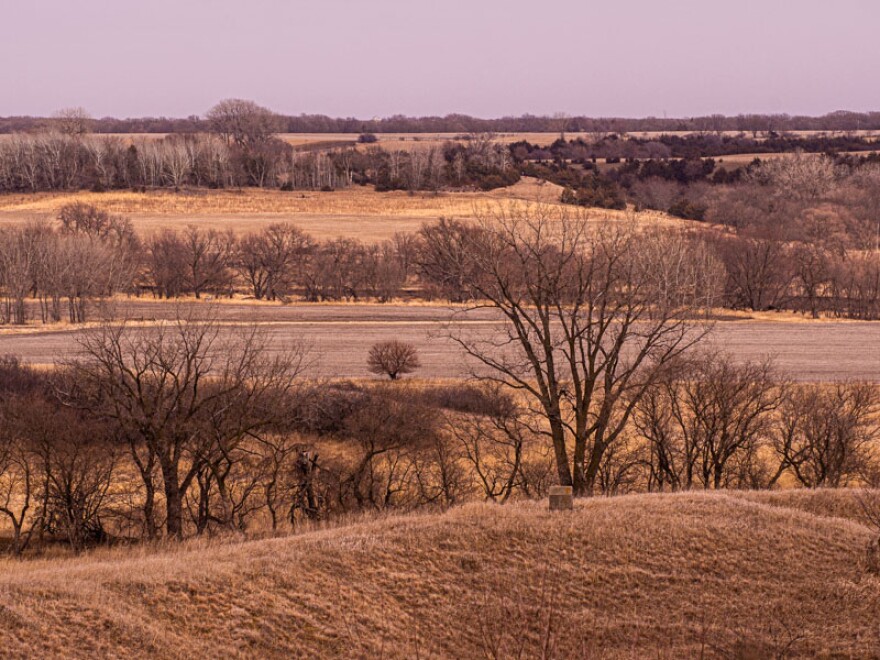Let me show you the way. Take Hwy 10 east and south out of Sutherland, dip into the river valley, then you turn right just before you get to the Little Sioux River.
We’re looking for a solitary gravestone, so take that gravel going south. When it twists west then south again, stay with it. Now’s the tricky part.
A carpet of old prairie runs in and over the hills created long ago by the Little Sioux River. When you start climbing, stop the car and look east. Look hard. Keep looking until you spot one solitary stone in all that brushy grass. That stone marks what remains of Old Dutch Fred, who wasn't Dutch, but German, a single-minded immigrant who left his wife and daughter in Prussia, divorced her in fact, gave her her freedom, but never gave up the dream of having the two of them join him once he grabbed his dream from a place called America.
In 1864, the awful trip over the brine just about killed him. Some passengers got together, wrote a letter, slipped it into a bottle, then tossed it into the sea. That letter listed the horrors on the ship, then offered this: "We want to deter immigration through any agent," it said. "We regret having made the decision to travel to America."
Dutch Fred was undeterred. He arrived in New York, just a few coins in his pocket. "I am a farmer, and I will find land to till and grow crops," he'd tell people. "That is all I know." Literally, that was. He couldn't read, spoke broken English, and had no idea what a map was. "I am a farmer, and I will find land to till and grow crops," he'd say.
In Philly, he worked at a brewery, got the job by stopping a fight in a bar. He became a good friend of the working girls because he refused to let them come to harm.
He inched west. In Cleveland, he watched a man nail up a poster and then tell him out west land was free if you lived on it for five years—some place called Iowa, that man told him.
"Where is Iowa?" Fred said. Man with the hammer pointed west.
The railroad ended at Cedar Falls, where Dutch Fred bought a wagon, a yoke of feisty red oxen, and supplies.
But he made it there--which is to say "here," and he tilled land in the northwest quarter of Waterman Township, O'Brien County, Iowa. He was never much more that what he told people he was—a man who tilled the land.
He made no enemies, but the hoppers ruined his few years on the land he dreamed about.
His simple grace became legendary, so that a man named Martin was somehow moved to place Dutch Fred's remains where, he thought, they should be, where they are today: on a hill beside the Little Sioux, on land he always dreamed of.
So, in 1922, 50 years after Dutch Fred's death, the town of Sutherland took up an offering, a dollar apiece. Mr. Martin carefully disinterred Dutch Fred's remains and put a stone up at the place he had always wanted to be.
You'll honor his memory if you take a winding road that slumbers between the hills to a place his gravestone stands proud and alone in the prairie grass. Some wayward meadow lark may pipe out a melody old Dutch Fred used to hear, and maybe still does.
Go on and sit a spell. Give your presence to a kind man who cared for his feisty red oxen no less than his neighbors, but died alone, half a world away from the only woman and child he ever loved.
An immigrant. An American immigrant.
__________________________
I am indebted to Carolyn Rohrbaugh's Dutch Fred: Immigrant, as well as the trip she took me on to find the old man's grave.







